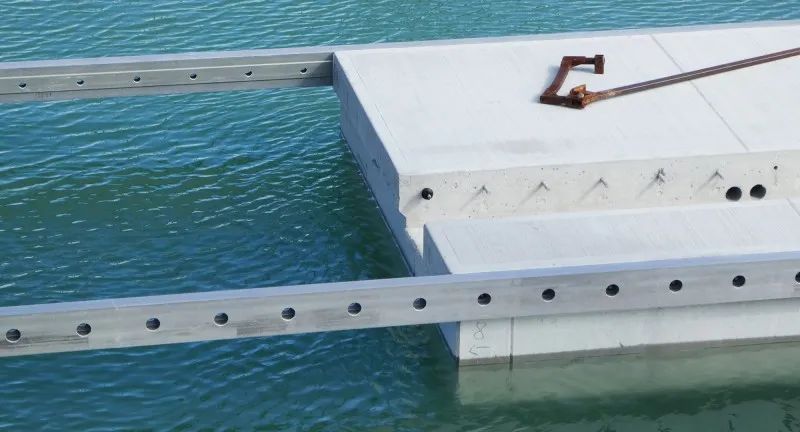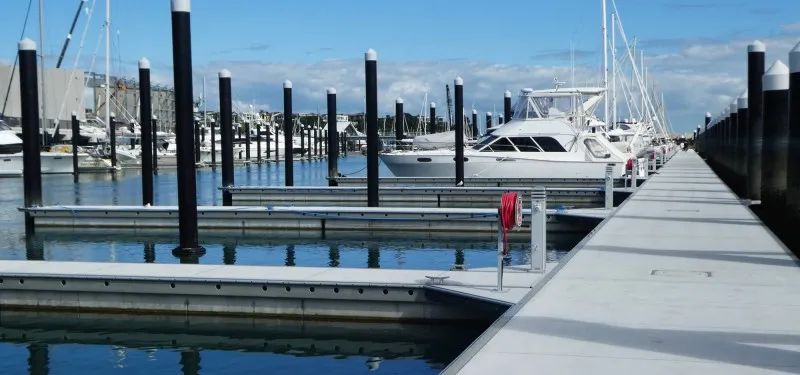From North America to Asia, from Europe to Oceania, new composite products appear in marine and marine engineering, playing an increasing role. Pultron, a composite materials company based in New Zealand, Oceania, has cooperated with another terminal design and construction company to develop and produce a new composite product waler.
A waler is a structural beam installed on the side of the quay section, spanning multiple concrete floats, holding them together. Waler played a key structural role in the construction of the terminal.

It is attached to the floating dock via a glass fibre reinforced polymer (GFRP) composite through rod and nut system. These are long rods that are threaded on both ends and held in place by nuts. Transoms and thru-bars are a key part of Bellingham’s Unifloat® concrete dock system.

GFRP composites are hailed as smart materials for dock construction. They have many advantages over wood, aluminium or steel and have a longer life cycle. And high tensile strength: Composites have high tensile strength (twice as much as steel) and are lighter than aluminum. Also flexural and fatigue resistant: GFRP hoardings are extremely resistant to flexing and fatigue, resisting tides, waves and the constant motion of the vessel.
GFRP composite products are more environmentally and ecologically friendly: piers are often home to a variety of marine life. Composites do not affect marine ecosystems because they do not corrode or leach chemicals. This is a way of protecting the environment. And cost-competitive: GFRP composites offer excellent durability and lifetime savings, especially when used in coastal and marine environments.
GFRP composite products have a bright future in marine engineering: Bellingham has built piers in some of the most beautiful places in the world. With the new composite material system, there are no nasty traces of rust leaks or concrete cracks from corroded steel.
Post time:
Apr-14-2022








